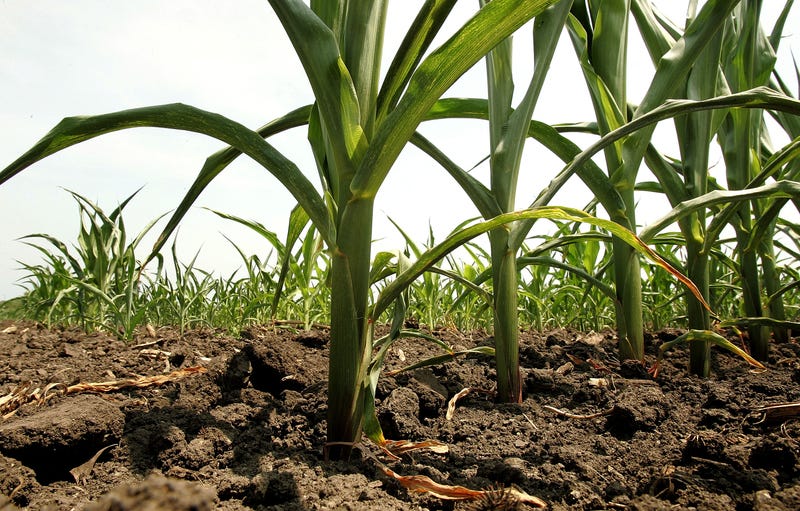 Photo: Tim Boyle / Staff (Getty)
Photo: Tim Boyle / Staff (Getty)
It’s no secret that modern humans, with our fuel-burning cars, massive ranching and agriculture practices, and penchant for disposable goods, have had a huge impact on nearly every environment across the globe. But new research shows that even our ancestors in the Bronze Age changed the chemistry of the soils they farmed over 2,000 years ago. It’s some of the earliest evidence of humans having lasting a environmental impact on planet Earth.
“This is a new lens on one of the most profound shifts in human history: when humans go from being part of nature to being drivers of environmental processes,” said Eric Guiry, the lead author of the new study and a PhD candidate of anthrozoology at the University of British Columbia.
The finding has implications for how we establish the boundaries of the anthropocene, the current geologic age defined by human actions having a dominating influence on the planet’s climate and environment. Many link the start of the anthropocene with the Industrial Revolution, the burning of fossil fuels, or the testing of nuclear bombs. But it’s now evident that even ancient humans could alter the environment in lasting ways.
Specifically, these Bronze Age farmers changed the nitrogen makeup of their fields and the surrounding ecosystems. Plants need nitrogen to grow, but in many cases, those plants also deplete nitrogen from the soil. Though some bacteria and fungi in the ground can fix nitrogen from the air to make it usable for plants, farmers began fertilizing their fields with nitrogen-rich manure to ensure a bountiful harvest. Fertilizing is still done today, of course, whether it be on large farms with commercial fertilizers or just adding some Miracle-Gro to a houseplant.
“Nitrogen is part of every ecosystem, and it’s a building block of life,” Guiry told Gizmodo. “Being able to manage it is key for expanding society.” And though taking charge of the nitrogen cycle isn’t inherently a problem for the environment, excess nitrogen from fertilizers today can pollute waterways and contribute to greenhouse gases.
Back in the Bronze Age, Irish farmers most likely started fertilizing and tilling their soil more often and on a larger scale as populations grew, Guiry said. More people ate more crops and owned more livestock—like cattle, pigs, goats, and sheep—which meant more poop from that livestock could be used to grow more crops.
That’s why the researchers saw an uptick in a certain nitrogen isotope associated with crop growing in animal bones from the middle and late Bronze Age, around 2,000 years ago. The farmers had disrupted the nitrogen cycle for the first time, changing the chemistry of their soils and the ecosystems that surrounded them—at least in Ireland.
“This is a tipping point for an entire ecological system,” said Sarah McClure, a zooarchaeologist at Penn State University who wasn’t involved in the study. “In the Bronze Age, you get these prolonged, deep shifts in the nitrogen composition of the soils due to human activity that never really go away.”
The research team extracted this key isotope, nitrogen-15, from 712 animal bones that came from 90 different archaeological sites in Ireland and spanned the entire Holocene (the last 10,000 years). Nitrogen signatures in animal bones are a good indicator of what they ate in their last 10 or 15 years of life, so the researchers hoped to glean whether domesticated animals back then were eating fodder that had been grown in soils with altered chemistry.
“Those buried bones are providing a little time capsule back to when those animals were alive,” Fiona Beglane, a zooarchaeologist at the Institute of Technology, Sligo in Ireland and one of Guiry’s co-authors, told Gizmodo.
Nitrogen-15 signatures should have stayed steady, but in the mid- to late-Bronze Age they jumped to levels similar to what we see in the modern era, as described in the study published today in Science Advances. That was the tipping point where ancient humans in Ireland started altering Earth’s environment for their benefit instead of just living in it.
“We didn’t realize to what extent they’d changed the nitrogen cycle essentially forever,” said McClure.
What’s more, nitrogen-15 also increased in bones from wild animals like red deer. The authors argue that this means farmers back then weren’t just impacting their own fields’ chemical makeup, but rather ecosystems across the entire island of Ireland.
And while this study was restricted to bones only from Ireland, McClure and Guiry said the method could easily be applied to other regions around the globe. Doing so could help pinpoint when major players of agropastoralism—the lifestyle of growing crops and raising livestock—started chemically changing Earth.
“Until we understand the effects that people have on soil and the environment, it’s hard to look ahead and see the effects we continue to have now,” Beglane said. “People argue what we do today has no effect with seven billion of us. Now we’re showing people back in the Bronze Age made irreversible changes happen, and there were just a few million people then. If a small amount of people can have such a fundamental effect on the environment, it shows the numbers we’re working with today are bound to have an impact.”
[Science Advances]